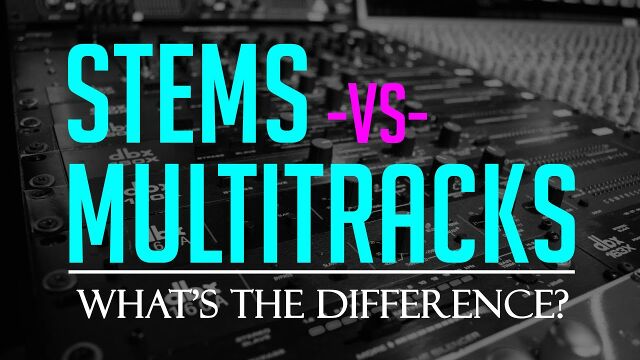Difference between revisions of "Stems vs Multitracks"
From MusicTechWiki
(→What are multitracks?) |
|||
| Line 3: | Line 3: | ||
Multitracks are great for mix practice and studying music production techniques. | Multitracks are great for mix practice and studying music production techniques. | ||
| + | |||
| + | There are lots of words that have established meanings in the music-making community — some terms that go back decades. As newcomers enter the fray, frequently there is confusion about what those terms mean. Here’s one example that has been discussed quite frequently, so I thought I’d set the record straight. | ||
| + | |||
| + | This has been a troublesome issue for mixers. It was recently highlighted by one of our industry’s luminaries, legendary mixer Bob Clearmountain, who posted on Instagram trying to clarify. | ||
| + | |||
| + | ''“Hi guys. I wanna talk about something that’s been kinda bugging me lately. I hear a lot of people referring to original multitrack files as ‘stems.’ I hear that all the time. ‘Well, we’re going to send you the stems to mix.’ Well, I usually don’t mix from stems. Stems are actually subgroups of tracks, like you might have a stereo stem of a drum set or a stereo stem of all the guitars or all the keyboards. Original multitracks with everything separate, with all the drums on separate channels, those are not called stems. And a lot of people call them that these days, and it’s just wrong . . .”'' | ||
| + | |||
| + | I want to hop on that bandwagon, too, because this has been a source of confusion for clients for many years. | ||
| + | |||
| + | What’s the difference between stems and multitracks? It’s simple. | ||
| + | |||
==What are multitracks?== | ==What are multitracks?== | ||
| Line 11: | Line 22: | ||
[[File:Stems-vs-Multitracks.jpg|640px|link=]] | [[File:Stems-vs-Multitracks.jpg|640px|link=]] | ||
| + | |||
==What are stems?== | ==What are stems?== | ||
Revision as of 01:11, 21 July 2022
Multitracks are great for mix practice and studying music production techniques.
There are lots of words that have established meanings in the music-making community — some terms that go back decades. As newcomers enter the fray, frequently there is confusion about what those terms mean. Here’s one example that has been discussed quite frequently, so I thought I’d set the record straight.
This has been a troublesome issue for mixers. It was recently highlighted by one of our industry’s luminaries, legendary mixer Bob Clearmountain, who posted on Instagram trying to clarify.
“Hi guys. I wanna talk about something that’s been kinda bugging me lately. I hear a lot of people referring to original multitrack files as ‘stems.’ I hear that all the time. ‘Well, we’re going to send you the stems to mix.’ Well, I usually don’t mix from stems. Stems are actually subgroups of tracks, like you might have a stereo stem of a drum set or a stereo stem of all the guitars or all the keyboards. Original multitracks with everything separate, with all the drums on separate channels, those are not called stems. And a lot of people call them that these days, and it’s just wrong . . .”
I want to hop on that bandwagon, too, because this has been a source of confusion for clients for many years.
What’s the difference between stems and multitracks? It’s simple.
What are multitracks?
Multitracks are the individual recorded elements of a song, and may be stereo or mono. Using a four-piece rock band as an example, the recording engineer miked the kick, snare, hi-hat, overheads, vocals, guitars and bass. Each of these recorded signals comprises a separate track. All of them together are a multitrack audio production.
Multitracks are often unprocessed to give the mixing engineer the greatest amount of flexibility when it comes time to put the puzzle together. Often they have very little EQ, compression and time-based effects that come into play during the mixing stage.

What are stems?
Stems are great to listen to what effects and signal processing the mix engineer used on different instruments and vocals.
Stem mixing and mastering - Wikipedia
Multitracks differ from stems. Stems are stereo bounces of pre-mixed elements. For instance, a drum stem would be a single stereo track of the entire recorded kit. While stems are useful for consolidating pre-mixed elements in a large session, they’re not of the greatest use when it comes to practicing our mixing skills. This is because a mixing engineer already committed to signal processing choices and printed his or her tracks as a stem.
The ability to individually manipulate the kick, snare, hi-hat, etc., with multitracks is where we really learn what we’re doing. Sessions comprised solely of stems are typically created after the entire mixing process.